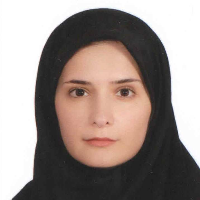A Comparative Study of the Sama Rite in "SamāNāmeh-Hā” and Persian, Painting with an Iconographic Approach
Author(s):
Article Type:
Research/Original Article (دارای رتبه معتبر)
Abstract:
Samā, as a ritual of the discourse of Islamic mysticism, refers to a process that its apparent presentation initially associates with a kind of dance or rhythmic movement due to the physical actions of the participants in this ceremony. Since the variety of sources related to Samā includes various fields such as mysticism, literature, music, painting, etc., the comparison and adaptation of the mentioned sources facilitates an accurate understanding of this ritual phenomenon. The purpose of this study is to make a comparative study between "SamāNāmeh-Hā" as written sources and "Miniatures related to Samā" as visual sources. Therefore, this study aims to investigate the question regarding how the issues raised in the "SamāNāmeh-Hā” and their reflection in Samā-centered drawings compared with written sources (belonging to the fifth to the ninth centuries) and visual sources (between the ninth to the eleventh centuries) on Samā. The comparison of the sources mentioned in this research includes three levels of "physical actions", "ritual behaviors" and "musical elements", which in accordance with each of these levels, in addition to the mentioned written and visual sources, the secondary sources such as musical treatises are also taken into consideration so as to remove any ambiguities. Although a comparative study of these visual and written sources can confirm similarities between the two, the differences resulting from this comparison somehow indicate that the painter does not follow the given written content in the SamāNāmeh-Hā. Therefore, this can be considered as the painter's transition from the "real world" to the "imaginary world". In other words, the differences arising from the comparative study of the SamāNāmeh-Hā and related paintings can be used as a goal of this research in order to extract and distinguish the real elements (topics in the SamāNāmeh-Hā) from the imaginary elements (related to painter’s imagination) in the selected paintings. The findings of this study, which have been analyzed by a comparative method based on Panofsky's theory of "iconography", in addition to showing the relative overlap between the above sources, suggest artist's faithfulness to "SamāNāmeh-Hā” themes were generally accompanied by sparks of reality in their works, while as the painter distances himself from the content of written sources, the imagination in the relevant paintings intensifies and their relation to reality diminishes. The research findings also identified three levels, including physical actions, ritual behaviors, and musical elements: "Ritual behaviors", actually reflecting the ritual-based aspects of Samā, are presented at three levels of time, place, and participants. This does not mean SamāNāmeh-Hā and paintings in this area are completely compatible with each other, because things like the presence of women in some of the paintings are not relevant to the contents of SamāNāmeh-Hā. The results of this iconographic reading in relation to the "musical elements" of Samā indicate the maximum correspondence of the SamāNāmeh-Hā and paintings in relation to the musical elements. The results are as the following: 1) The frequent visible Instruments in the paintings (Ney, Daf / Dāyereh) have already been approved in the “SamāNāmeh-Hā” by the Sufi sheikhs; 2) The visual documents related to the Ney represent two different types of this instrument; one with the title "Nāy or Sefid-nāy", the same instrument that has been already approved by the Sufi sheikhs in the "SamāNāmeh-Hā”, and the other, "Siyah-Nāy or Iraqi Nāy", which its use in the Samā ceremony has been rejected and forbidden by Islamic jurists; 3) In this paintings, what is seen as a Daf/Dāyereh is remarkably and structurally consistent with what is described in "SamāNāmeh-Hā”. It seems that the maximum conformity and overlapping of SamāNāmeh-Hā and paintings are the outcome of negative and restrictive jurisprudential rulings issued in relation to instruments as well as the way music is performed. In such a context, the presence or absence of music in Samā ceremonies is subject to two general approaches to this category: 1) Music is a phenomenon that derives its legitimacy from "tradition"; 2) The influence of trans-musical aspects that make the rejection or approval of music conditional on the involvement of an external factor on the musical background. Considering the Iranian painter's understanding of literary and mystical texts (for the purpose of Book Illustration), two points can be seen in relation to the elements in the paintings: 1(Imaginary elements: including symbolic images such as garden, cypress, stream of water etc., which are more dependent on the themes of literary and mystical texts than the content of SamāNāmeh-Hā; 2) Real elements: including the group of musicians, instruments and in general the elements that specifically represent the Samā rites. Since SamāNāmeh-Hā provide relatively accurate descriptions of the Samā ceremony, the comparison of these written sources with paintings reinforces the hypothesis that these works are apparently in line with what has existed in practice. The present article has been compiled based on library resources.
Keywords:
Language:
Persian
Published:
Negareh journal, Volume:18 Issue: 67, 2023
Pages:
103 to 123
magiran.com/p2631713
دانلود و مطالعه متن این مقاله با یکی از روشهای زیر امکان پذیر است:
اشتراک شخصی
با عضویت و پرداخت آنلاین حق اشتراک یکساله به مبلغ 1,390,000ريال میتوانید 70 عنوان مطلب دانلود کنید!
اشتراک سازمانی
به کتابخانه دانشگاه یا محل کار خود پیشنهاد کنید تا اشتراک سازمانی این پایگاه را برای دسترسی نامحدود همه کاربران به متن مطالب تهیه نمایند!
توجه!
- حق عضویت دریافتی صرف حمایت از نشریات عضو و نگهداری، تکمیل و توسعه مگیران میشود.
- پرداخت حق اشتراک و دانلود مقالات اجازه بازنشر آن در سایر رسانههای چاپی و دیجیتال را به کاربر نمیدهد.
In order to view content subscription is required
Personal subscription
Subscribe magiran.com for 70 € euros via PayPal and download 70 articles during a year.
Organization subscription
Please contact us to subscribe your university or library for unlimited access!




